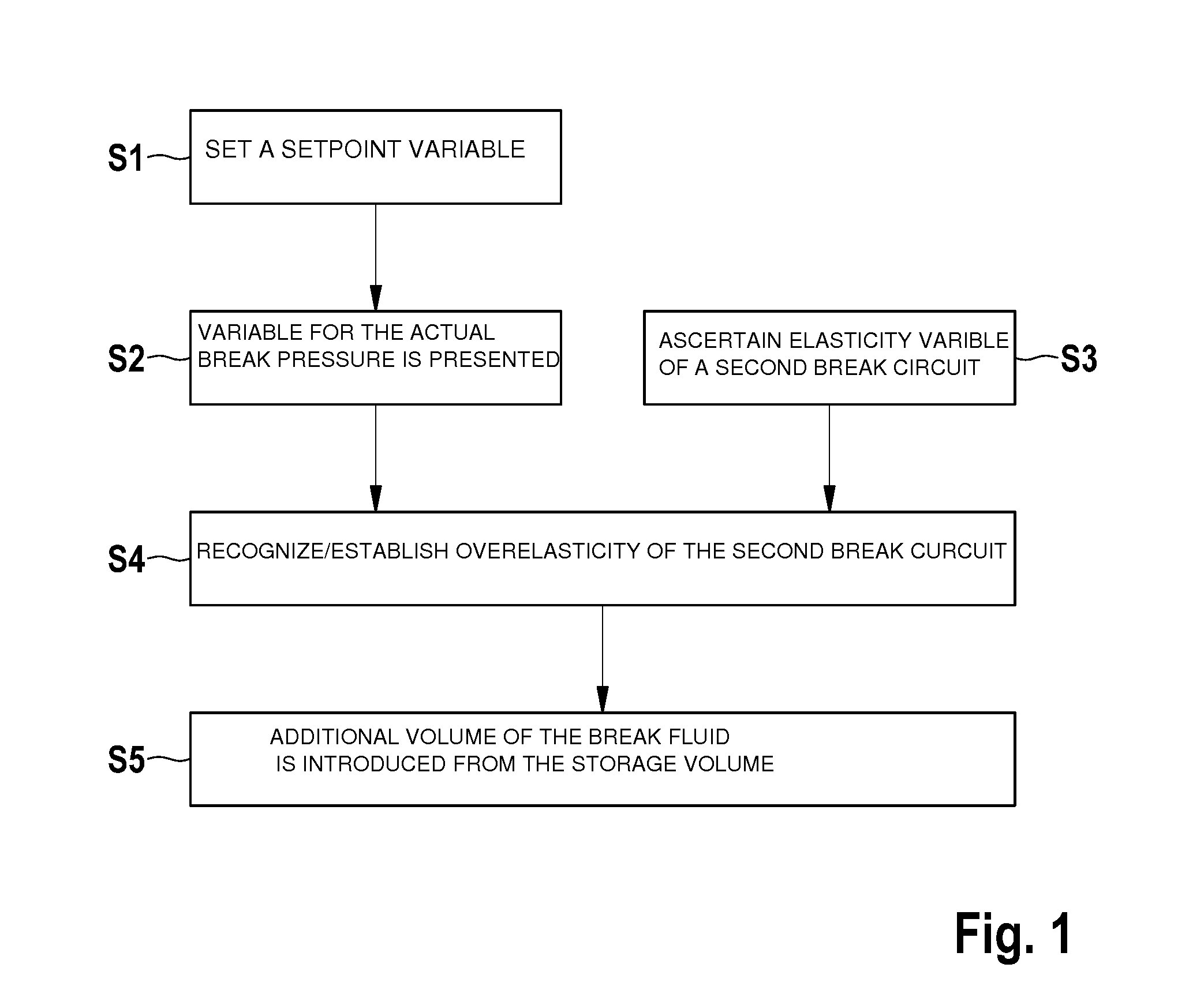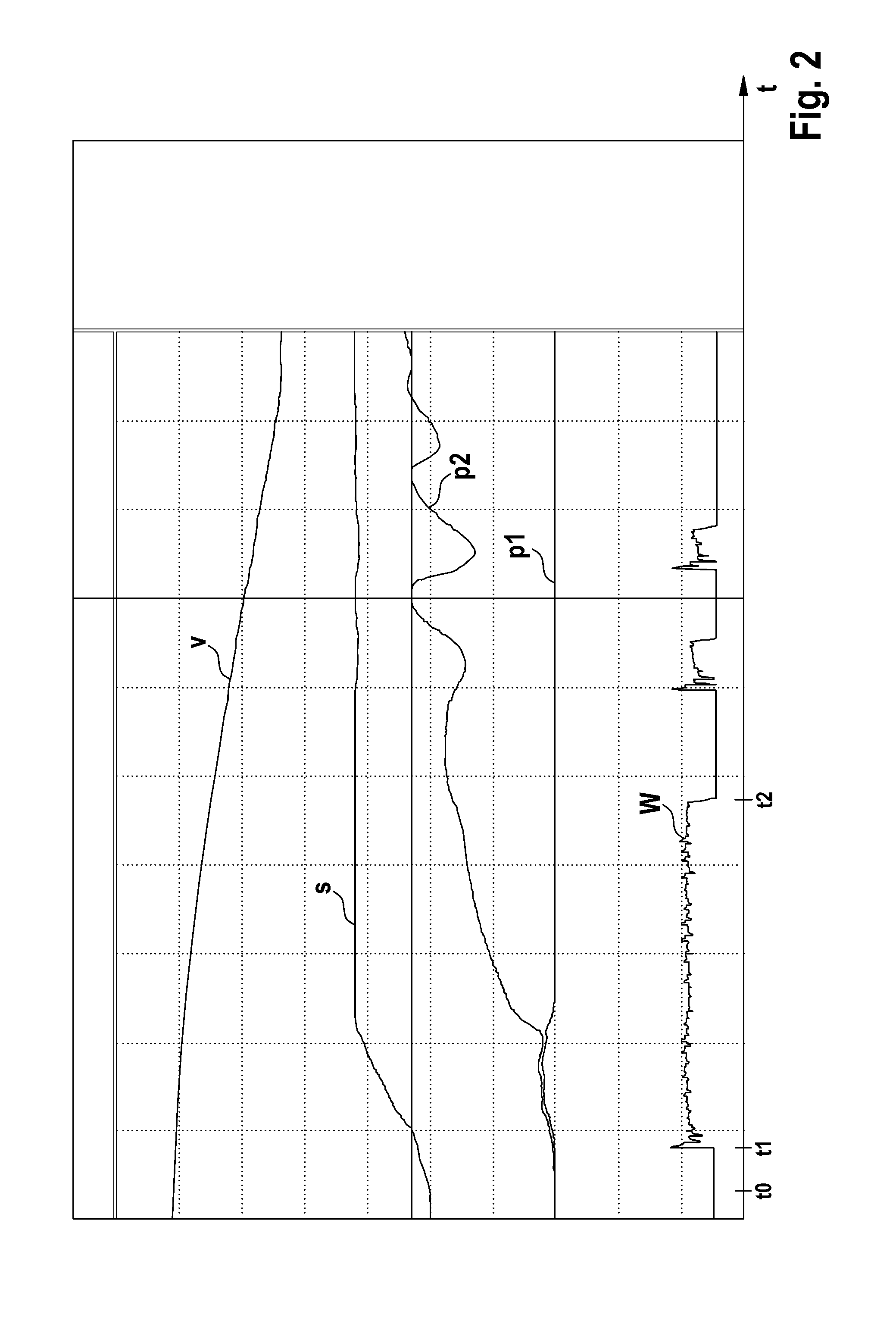Control device for a braking system of a vehicle, braking system, and method for operating a braking system for a vehicle
a control device and braking system technology, applied in the direction of braking systems, electric devices, instruments, etc., can solve the problems of functional impairment of the affected brake circuit, and achieve the effect of ensuring the implementationability of the booster control point, reducing the volume intake of the standard braking system, and reducing the amount of braking circuit damag
- Summary
- Abstract
- Description
- Claims
- Application Information
AI Technical Summary
Benefits of technology
Problems solved by technology
Method used
Image
Examples
Embodiment Construction
[0016]FIG. 1 shows a flow chart for explaining a first specific embodiment of the method for operating a braking system.
[0017]The method described below may be carried out using a braking system which includes a main brake cylinder, a storage volume, external to the brake circuit, which is fillable with a brake fluid, a first brake circuit having at least one first wheel brake cylinder, a second brake circuit having at least one second wheel brake cylinder, and at least one volume conveying device. The at least one volume conveying device may be a pump and / or a plunger, for example.
[0018]The at least one second brake circuit is operable at least in a main brake cylinder braking mode in which a pressure in the second brake circuit is controllable with the aid of the main brake cylinder. This may be understood to mean that the driver has the option of braking the second brake circuit which is in the main brake cylinder braking mode by activating a brake activation element, for example...
PUM
 Login to View More
Login to View More Abstract
Description
Claims
Application Information
 Login to View More
Login to View More - R&D
- Intellectual Property
- Life Sciences
- Materials
- Tech Scout
- Unparalleled Data Quality
- Higher Quality Content
- 60% Fewer Hallucinations
Browse by: Latest US Patents, China's latest patents, Technical Efficacy Thesaurus, Application Domain, Technology Topic, Popular Technical Reports.
© 2025 PatSnap. All rights reserved.Legal|Privacy policy|Modern Slavery Act Transparency Statement|Sitemap|About US| Contact US: help@patsnap.com



